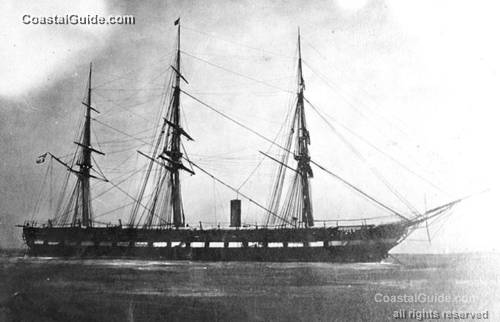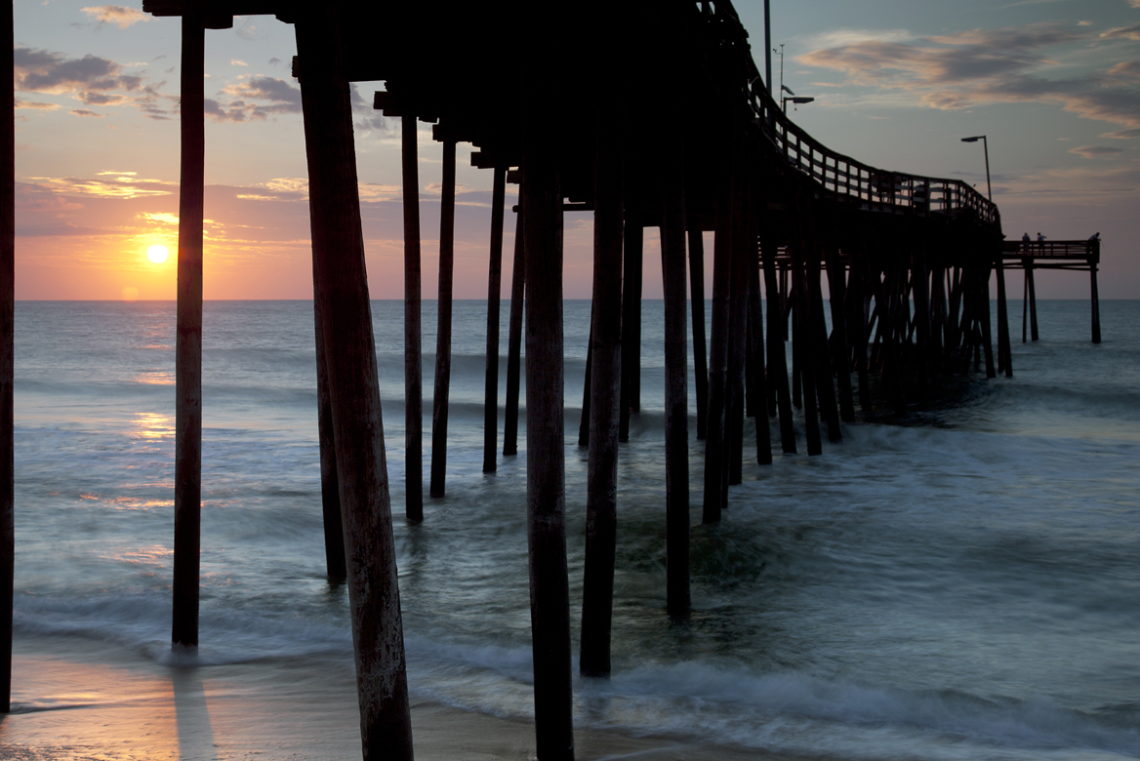
USS Wabash, a 4808-ton steam screw frigate, was built at the Philadelphia Navy Yard. Commissioned in August 1856, she initially served as flagship of the Home Squadron, then went to the Mediterranean in 1858-59.
With the outbreak of the Civil War, Wabash was recommissioned on 16 May 1861, Capt. Samuel Mercer in command, and departed New York on 30 May 1861 as flagship of the South Atlantic Blockading Squadron, she was an active force in the Blockade of Charleston, S.C., in 1862-64.
Wabash captured the brigantine Sarah Starr off Charleston, S.C., on 3 August 1861, and recaptured the American schooner Mary Alice, taken earlier by the CSS Dixie. By this date, she had also captured the brigantines Hannah, Balch, and Solferino, along with 22 Confederate prisoners from the four vessels.
On 26 August 1861, Wabash departed Hampton Roads, bound for Hatteras Inlet, N.C., to take part in the first combined amphibious assault of the war. Wabash accompanied Monticello, Pawnee, revenue cutter Harriet Lane, the tug Fanny, and two transports, carrying over 900 troops under Major General Butler. Union forces secured Hatteras Inlet with the capture of Forts Hatteras and Clark on 29 August 1861. The attack force suffered no casualties and took over 700 prisoners. Among these was Capt. Samuel Barren, CSN, the former commander in the United States Navy of Wabash when she served under Rear Admiral La Vallette. Wabash was later designated the flagship of Flag Officer Samuel F. Du Pont, the new commander of the South Atlantic Blockading Squadron, and was sent to the New York Navy Yard for repairs on 21 September 1861.
After refit, Wabash departed Fort Monroe on 29 October 1861 to spearhead the Federal assault on Port Royal, S.C. The assembled invasion fleet was the largest yet organized by the Navy, containing 77 vessels and 16,000 Army troops under Brigadier General Thomas W. Sherman. The combined force secured Port Royal Sound on 7 November 1861 after a furious four-hour battle. Wabash led the battle line in this major strategic Union victory.
Wabash now took up permanent station on the Charleston blockade, operating out of Port Royal. On 11 March 1862, a landing party led by ship's commanding officer, Comdr. C. R. P. Rodgers, occupied St. Augustine, Fla. A detachment of seamen and officers from Wabash landed and manned a battery which bombarded Fort Pulaski, Ga., on 10 and 11 April 1862 and was instrumental in forcing that Southern fort to surrender. A naval battery of three 12-pounder boat howitzers from Wabash supported Union troops at the Battle of Pocotaligo, S.C., on 22 October 1862.
Confederate vessels twice harassed Wabash while on duty in Port Royal Sound. On 5 August 1863, CSS Juno, a small steamer on picket duty below Fort Sumter, fired upon and ran down a launch from Wabash, capturing 10 sailors and drowning two. A "David" submarine torpedo boat also attacked Wabash on 18 April 1864. Ensign Charles H. Craven, officer of the deck, spotted the cigar-shaped vessel in time for Wabash to get underway. The "David" disengaged from the attack in the face of musket fire and round shot discharged from Wabash.
Wabash departed her station on 1 October, bound for the Norfolk Navy Yard and an overhaul. En route, she grounded briefly on Frying Pan Shoals, suffering minor damage to her rudder. Repairs and overhaul were completed by 16 December, in time for Wabash to join the North Atlantic Blockading Squadron and to participate in the first attack on Fort Fisher, N.C., on 24 and 25 December 1864. Her Civil War service was climaxed by participation in the ultimately successful assaults on Fort Fisher, North Carolina.
Wabash returned to Hampton Roads on 17 January 1865, receiving orders on 25 January 1865 to proceed to the Boston Navy Yard. Recommissioned in 1871 and served for two years as flagship of the Mediterranean Squadron. In 1876, she became the receiving ship at the Boston Navy Yard, Massachusetts. Ultimately housed over to increase internal space, Wabash served in this role until she was sold in November 1912. The following year, she was burned to facilitate salvage of her metal parts.





